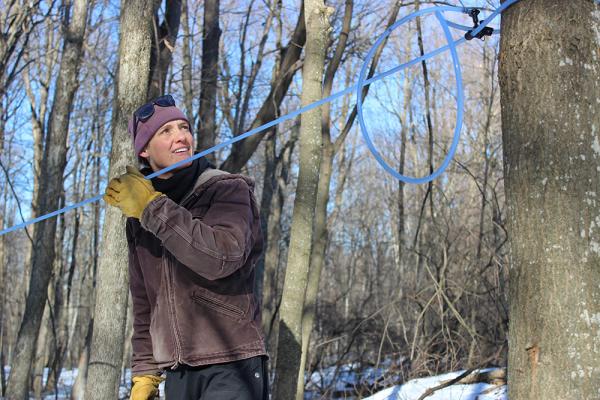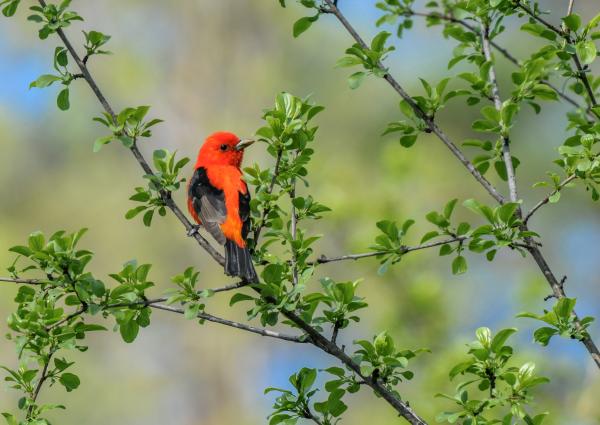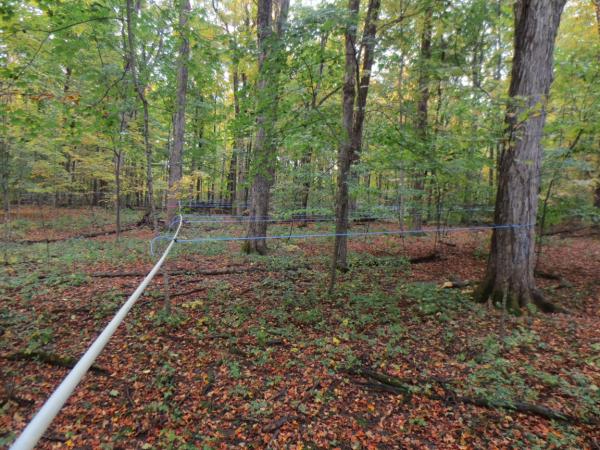A Bird-Friendly Sugarbush
Our 400 acres of woodlands are Green Certified by the American Tree Farm System, but we are always looking for ways to manage our forests more sustainably.
So when Steve Hagenbuch of Audubon Vermont approached us about a new Bird-Friendly Maple Project Recognition Program, we were interested in being a part of it.
Audubon Vermont had gotten together with the VT Dept of Forests, Parks, and Recreation and with the VT Maple Sugar Makers Association a few years ago to develop some benchmarks for commercial sugarmakers to ensure their sugarbushes are healthy for both sap and songbirds.
Steve assessed our 15-acre sugarbush for its bird-friendly qualities before our last sugaring season. “Bird-friendly” is best described as the likelihood that a variety of bird species will successfully raise and fledge their young.
- A current forest management plan Do we have one? Yes. This shows him that we aren’t harvesting or modifying our woodlands willy-nilly (we aren’t!), but that we're aiming for diverse stands that are productive for lumber, firewood, sap; attractive to wildlife; and enjoyed by the public. A thoughtful plan for the future of a bird-friendly sugarbush is just as important as what its current condition is.
- Tree species diversity is important to support the broadest range of birds, each of which may have a niche habitat or food requirements. Specifically, Steve evaluated:
- Are there other tree species besides sugar maples in our sugarbush? Yes. We have American beech, white ash, black birch, bitternut hickory, and red oak. (Red oak is particularly valuable because lots of native insects like it, so lots of insect-eating birds like it, too.)
- Are we controlling for invasive species like buckthorn or Norway maple? Check. These invasives are more of a problem in other areas of the property than they are in the sugarbush.
- Complex forest structure. Forest structure (a range of tree sizes and ages), is important for the same reason tree species diversity is important: different birds rely on different parts of the forest for nesting, food, etc.
- Does our sugarbush have a range of tree sizes and ages? Yes, but with an asterix: Our understory cover is skimpy. This finding wasn’t a surprise: we’ve been struggling to manage an oversized deer population for some time--deer that browse and destroy young saplings.
- Are there enough standing dead trees (“snags”) and downed limbs and trees? Our sugarbush held up in this category, although Steve’s report recommended we let a few more snags endure. This is already a stated objective in our Forest Management plan, so as the saying goes, “we’re on it!”
Overall, the assessment concluded that in our sugarbush, there is a “good likelihood that many associated bird species are able to successfully raise and fledge their young.” Now our sugarbush is recognized as “bird-friendly.”
If you’re interested in finding out more about “Bird-Friendly” sugarbush recognition, contact Steve Hagenbuch (shagenbuch@audubon.org) or visit https://vt.audubon.org/maple



